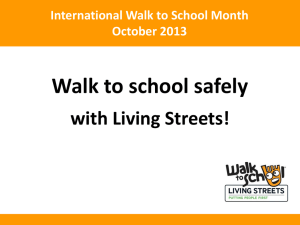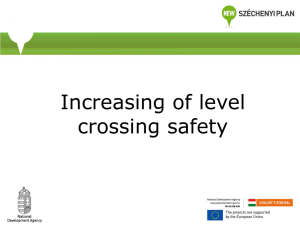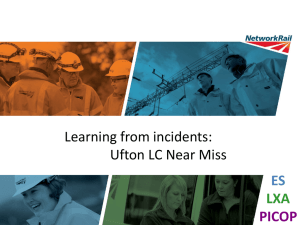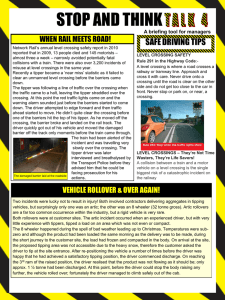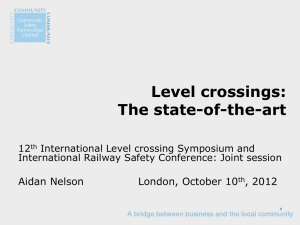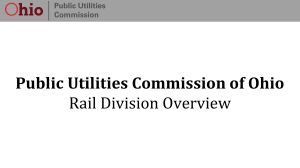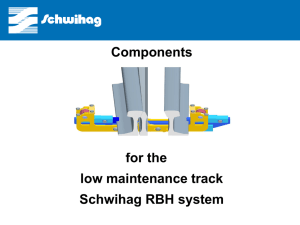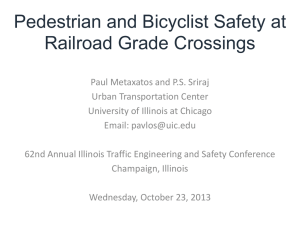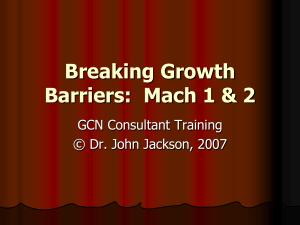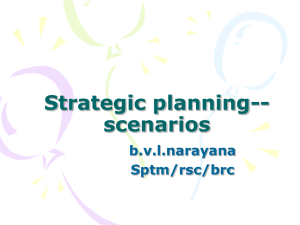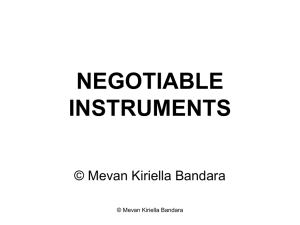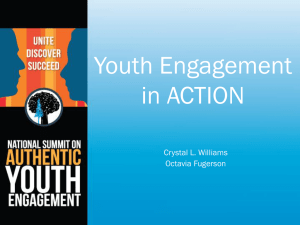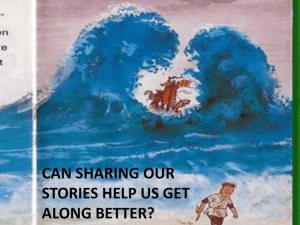Document
advertisement
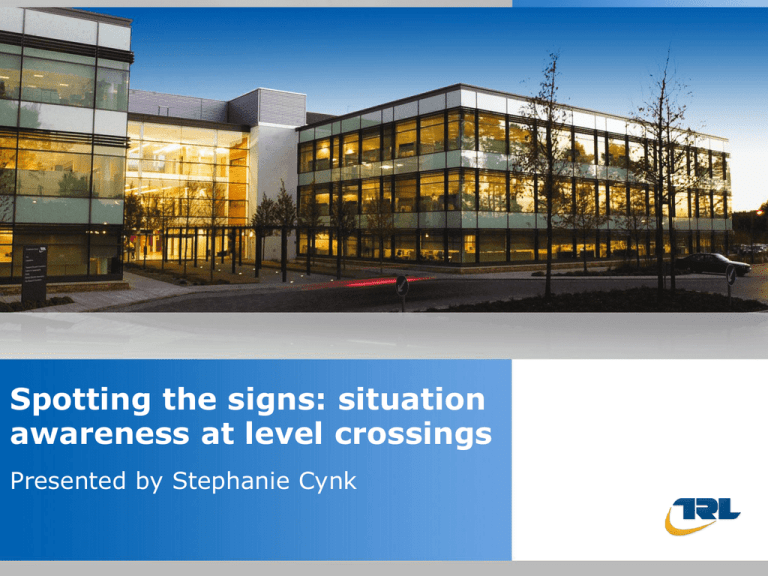
Insert the of situation your Spotting thetitle signs: presentation herecrossings awareness at level Presented Name Here Presented byby Stephanie Cynk Job Title - Date Level crossings in Britain are very safe …but incidents still occur Page 2 Level crossing signs Page 3 T756 – Signs and signals at level crossings Commissioned by RSSB in 2009 A root and branch review of signing requirements - Without the influence of previous requirements and constraints, - What would be most effective in reducing road user errors at level crossings? Situation awareness (Endsley, 1995; Endsley, 2000) Take in information through senses Perception Use information to forecast future events Comprehension Assign meaning to information Page 5 Projection Situation awareness An example I must brake because the barrier will come down and a train will pass through the crossing. I expect other traffic to stop too. I see a triangular warning sign and light signals ahead Perception Comprehension The light signals are flashing which means stop Page 6 Projection Blocking back When vehicle drivers enter the level crossing at a time when the crossing exit is blocked (eg by queuing traffic) Page 7 Blocking Back The cause of approximately 7% of the risk associated with vehicles at level crossings ‘Never drive onto a crossing until the road is clear on the other side.’ Page 8 Another train coming About 10% of the risk associated with pedestrians at level crossings The primary indications - signals provided continue to flash red, - the barriers, if provided, stay down Additional measures - The tone of the audible alarm changes - A sign - A signal Page 9 Another train coming Sound 1 – alarm for first train Sound 2 – starts immediately as first train passes, to indicate that another train will pass Page 10 Research questions Does participants’ awareness of the potential for more than one train to pass through the crossing vary by type of level crossing? Do current second train warning signs and sounds affect awareness of the potential for second trains? Are participants aware that they should not enter the level crossing before the crossing exit is clear? Is awareness of blocking back dependent on level crossing type if a lorry is parked at the level crossing exit? Page 11 Open Crossing Page 12 Automatic Open Crossing Page 13 Automatic Half Barrier Crossing Page 14 Automatic Half Barrier Crossing (Max) Page 15 Manually Controlled Barrier Page 16 MCG Page 17 Another train coming Page 18 Were any road signs present in the video? If so, which ones? Level 1 & 2 situation awareness Another train coming Only shown in one scenario 30 presentations in total 4 recalled its presence Page 19 Did the level crossing have a barrier? Level 1 situation awareness Generally high awareness One participant viewing the AHB Max said there was no barrier Three who viewed the AOCL said there was a barrier Page 20 Barrier position Level 2&3 situation awareness Generally high awareness that where barrier was present, it was blocking the road Scenario Page 21 N Assumed barrier would rise AHB 29 27 MCG 30 29 MCB 31 29 AHB Max 29 22 Did the level crossing have light signals? Level 1 situation awareness Generally high awareness Four participants viewing the MCG said there were signals (and a further two were unsure) Page 22 Signal aspect Level 2&3 situation awareness Generally high awareness One participant thought steady amber instead of red Responses for MCG scenario varied Scenario Page 23 N Assumed wig-wags would change MCB 30 27 AHB Max 29 26 AHB 29 26 Would you expect another train to pass through the crossing after the first one? Level 3 situation awareness *with significant prompting Expectation Page 24 Number Yes, a further train could pass 17 No, a further train could not pass 2 Unsure 11 Blocking back Page 25 Were any road signs present? If so, which ones? ‘Keep Crossing Clear’ sign Keep Crossing Clear Page 26 • Generally only one or two participants in each scenario recalled it (when it was presented) • Almost a quarter recalled the sign in the Open Crossing scenario Were there any other road users in the scene? Level 1 situation awareness Generally high awareness of other road users One participant in AHB Max and MCB scenarios said there were no other road users present 15 out of 21 drivers in the MCG scenario said there were no other road users Page 27 Progress through the scene Level 2&3 situation awareness AHB 18 18 Number who saw the lorry 17 AHB Max 19 18 18 3 AOCL 18 18 17 3 MCB 22 21 21 3 MCG 21 15 10 11 OC 22 22 22 6 Scenario Page 28 Number who saw other road users N Number who would proceed 3 Discussion Participants’ recall of signs was low - The Open Crossing was the notably different scenario Expectation may play an important role in recollection - Recalling light signals where there werenone - Recalling barriers where there were none Awareness for the potential of more than one train passing through the crossing was generally low - Existing measures make a difference (but a very small difference) Discussion In most scenarios, participants were aware of other road users - MCG scenario produced different results Participants mostly said that they would not proceed onto the crossing - But almost a quarter of participants said they would Page 30 Conclusions ‘Another train coming’ measures do have an effect - But only a small effect There is some awareness of the need to ‘Keep crossing clear’ - But there is room for improvement Do You Have Any Questions? Page 32 Thank you Presented by Dan Basacik Senior Human Factors Researcher Email: dbasacik@trl.co.uk Page 33
